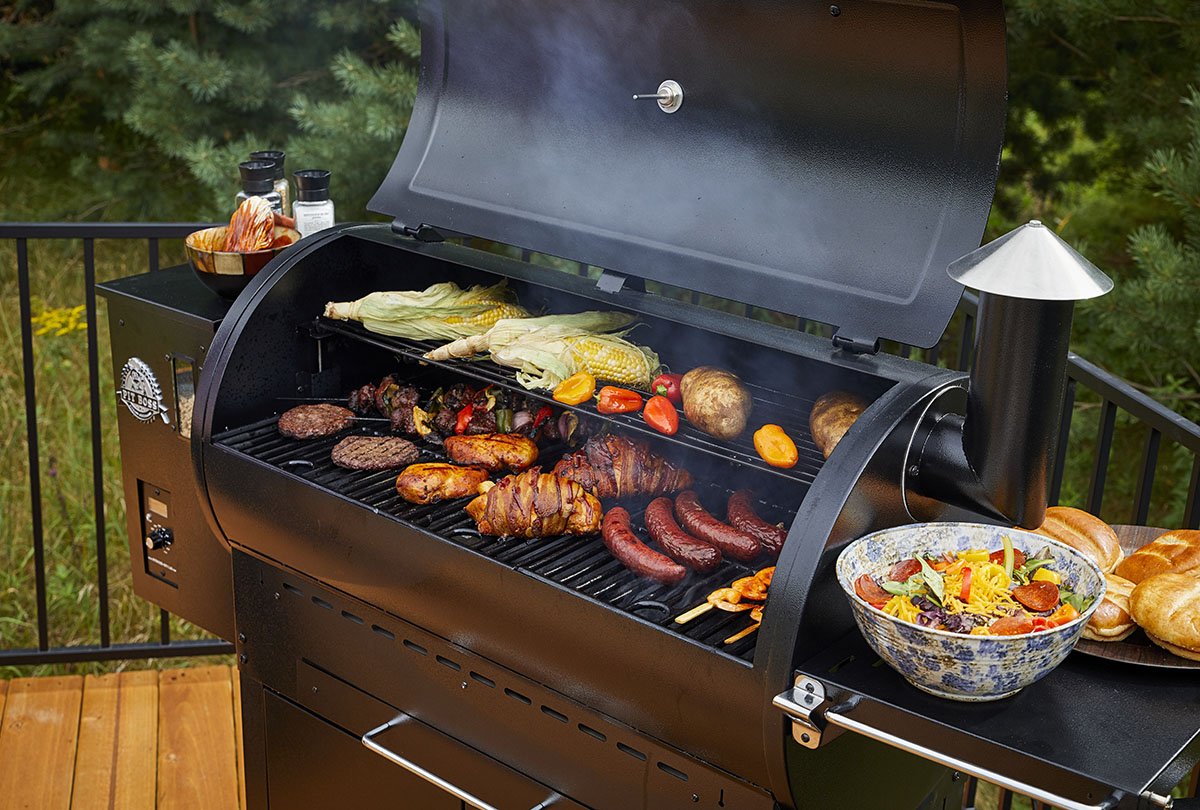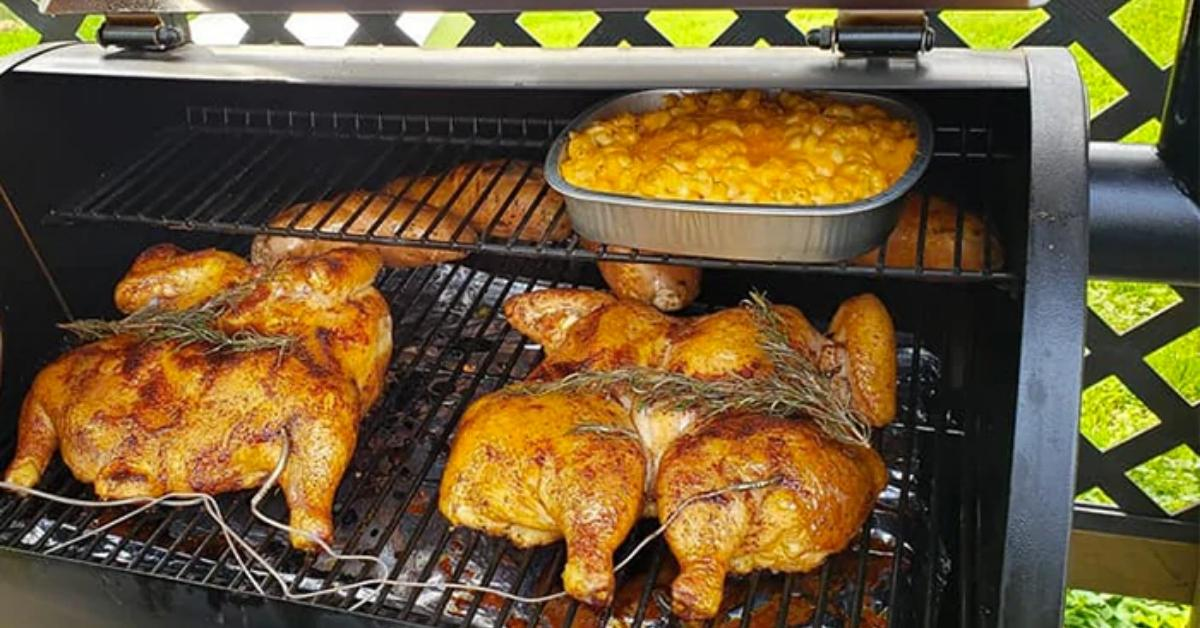How to Smoke Pulled Pork on a Pellet Smoker: Insider Tips and Tricks
Written By James Morgan
It's here. The art of crafting tender pulled pork is a game-changer for any barbecue enthusiast. Whether you're a seasoned pitmaster or a curious beginner, knowing how to smoke pulled pork on a pellet smoker can elevate your BBQ game to astonishing heights. Pellet smokers are often touted for their ease of use and ability to maintain consistent temperatures over long smoking sessions, making them ideal for achieving mouth-watering pulled pork.
Getting started with your pellet smoker might seem like a daunting task, but with the right guidance, you'll find that it's more manageable than you'd think. In this comprehensive guide, we will walk you through the entire process. You'll learn everything from selecting the meat to choosing the right wood pellets, and, of course, the specific steps for smoking pulled pork that will have your guests raving about your culinary prowess.

Choosing Your Pork
Best Cuts for Pulled Pork
The backbone of any great pulled pork dish is the pork itself. While there are several cuts of pork, the best for smoking are the pork shoulder and the pork butt (also known as the Boston butt). These cuts are marbled with fat, which renders down during the long smoking process, resulting in tender, juicy meat. You want a piece that's around 8 to 10 pounds for an optimal balance of meat to fat ratio.
Avoid cuts such as tenderloin and loin, as these are much leaner and tend to dry out when subjected to extended smoking times. For a more in-depth understanding of the best cuts for pulled pork, check out our guide on best meat cuts.

Prepping the Pork
Seasoning and Marinating
Before you fire up your pellet smoker, adequately preparing the pork is crucial. Start by rinsing the pork shoulder under cold water and patting it dry with paper towels. This helps to remove any excess blood and bone fragments. Once the pork is dry, apply a generous amount of dry rub all over the meat. The dry rub can be a simple mix of salt, black pepper, and paprika, or a more elaborate mixture, including garlic powder, onion powder, and brown sugar.
For best results, let the seasoned pork rest in the refrigerator for at least 12 hours. This gives the flavors plenty of time to penetrate the meat. A more profound flavor infusion can be achieved by injecting a marinade or brine into the pork before applying your dry rub. For more preparation tips, read our post on Dutch oven prep. This step is optional but highly recommended for added flavor complexity.

Setting Up Your Pellet Smoker
Selecting Wood Pellets
One of the joys of using a pellet smoker is the variety of wood pellets available, each providing a unique flavor profile. For pulled pork, pellets made from hickory, apple, or a blend of both are particularly popular. Hickory offers a robust smoky flavor that pairs remarkably well with pork, whereas applewood lends a slightly sweet, fruity essence.
When selecting your pellets, check the packaging for any added fillers or artificial ingredients. Pure, hardwood pellets are best for achieving that authentic BBQ flavor. For a deeper dive into selecting the best wood pellets for smoking, check out this comprehensive guide.
Preheating the Smoker
With your pork prepped and wood pellets chosen, it's time to fire up your pellet smoker. Preheat the smoker to around 225F. This temperature is ideal for low-and-slow cooking, allowing the fat and connective tissues to break down gradually. As your smoker comes to temperature, align any deflector plates or water pans according to the manufacturer's instructions. These tools help in maintaining a consistent internal temperature, essential for a steady smoke. For additional tips on getting the most out of your pellet smoker, visit Pellet Grill Tips.

The Smoking Process
Placing the Pork
Once the smoker has reached the desired temperature, place the pork shoulder directly on the grill grates, fat side up. Positioning the fat side up allows the melting fat to baste the meat naturally, enhancing both flavor and texture. Close the smoker lid and insert a meat thermometer into the thickest part of the pork without touching the bone.
Maintaining Temperature
Maintaining a consistent temperature is crucial for smoking pulled pork. Resist the urge to frequently open the smoker, as this will cause temperature fluctuations that can extend your cooking time. Instead, monitor the internal temperature of the smoker and the pork using digital thermometers. Aim to keep the smoker at a steady 225F, adjusting the vents and adding pellets as necessary.
The Stall and the Wrap
A noteworthy phase of the smoking process is the stall, where the internal temperature of the pork seems to plateau around 160F. This happens as the moisture in the meat evaporates, cooling it. To push past this stage, consider the Texas Crutch. Remove the pork from the smoker, wrap it tightly in aluminum foil or butcher paper, and then return it to the smoker. This helps to retain moisture and accelerate cooking. For more on wrapping techniques, check out griddle accessory tips.
Finishing Up
Achieving the Perfect Internal Temperature
The goal is to cook the pork until it reaches an internal temperature of about 200F to 205F. At this point, the connective tissues have broken down sufficiently to allow the pork to be pulled apart effortlessly. This can take anywhere from 10 to 14 hours, depending on the size of your pork shoulder and the consistency of your smoker's temperature.
Resting and Shredding
Once your pork has reached the desired internal temperature, remove it from the smoker and let it rest for at least 30 minutes. Resting allows the juices to redistribute throughout the meat, resulting in a more flavorful and moist final product. After resting, use a pair of meat claws or forks to pull the pork apart into shreds. Discard any large pieces of fat but keep the smaller bits of crispy bark, as they add a delightful texture and flavor.
Serving Suggestions
Classic Pulled Pork Sandwiches
The most traditional way to serve pulled pork is in sandwiches. Pile the shredded pork onto a soft hamburger bun and top it with coleslaw and a dollop of your favorite BBQ sauce. This combination of flavors and textures makes for a truly remarkable eating experience.
Alternative Serving Ideas
If sandwiches aren't your style, there are countless other ways to enjoy your smoked pulled pork. Try it as a topping for nachos, mixed into a spicy chili, or served over a bed of creamy mashed potatoes. The possibilities are endless, limited only by your culinary imagination. For more creative ideas, see our post on BBQ sauce uses.
Common Mistakes to Avoid
Rushing the Process
One of the most common mistakes in smoking pulled pork is trying to rush the process. Unlike grilling, smoking requires patience. Keeping the smoker at a lower temperature for a longer period allows the fat and collagen to break down, resulting in tender, moist meat.
Not Monitoring the Temperature
Another mistake is failing to monitor the temperature accurately. Investing in a quality digital meat thermometer can make a tremendous difference. Constantly check both the internal temperature of the meat and the ambient temperature inside the smoker.
Skimping on the Rest
Allowing your pork to rest might seem insignificant, but it's critical for optimal flavor and juiciness. Cutting into the pork too soon can cause the juices to escape, resulting in drier meat. Always allow at least a 30-minute resting period.
FAQ
What type of wood pellets should I use for smoking pulled pork?
For pulled pork, hickory and applewood pellets are excellent choices. Hickory provides a bold, smoky flavor, while applewood offers a sweeter, fruitier taste. You can also experiment with other types of wood pellets or blends to find your preferred flavor profile.
How long does it take to smoke pulled pork on a pellet smoker?
The smoking time for pulled pork can vary depending on the size of the pork shoulder and the consistency of your smoker's temperature. On average, it takes about 10-14 hours to smoke a pork shoulder until it reaches the desired internal temperature of 200F to 205F.
Do I need to wrap the pork during smoking?
Wrapping the pork, a technique known as the Texas Crutch, is optional but can be helpful during the smoking process. Wrapping the pork in aluminum foil or butcher paper when it reaches an internal temperature of around 160F can help retain moisture, speed up cooking, and push through the stall phase more quickly.
For an array of terrific smoking recipes and tips, be sure to visit our friends at Amazing Ribs.
As an Amazon Associate, I earn from qualifying purchases.



